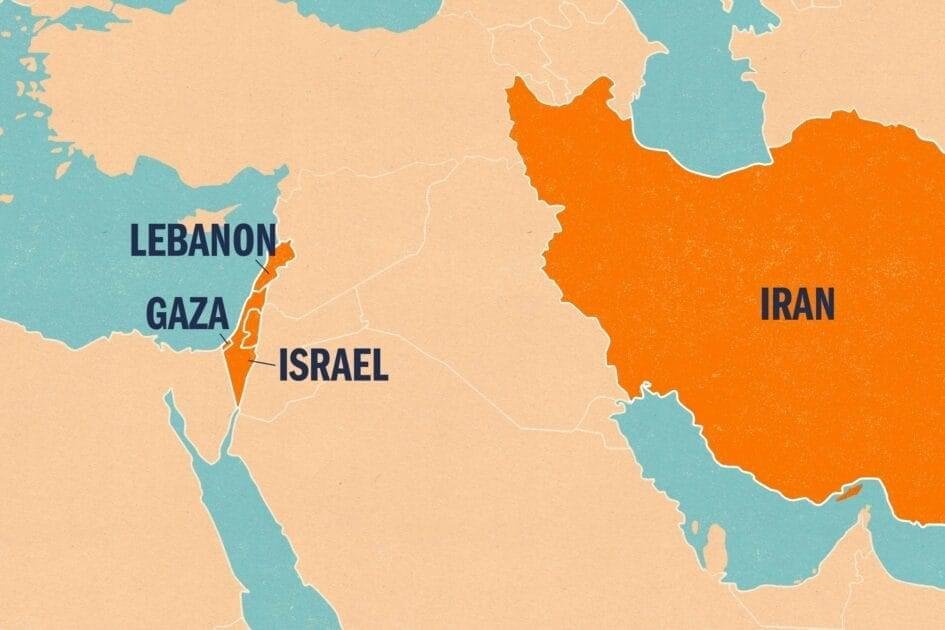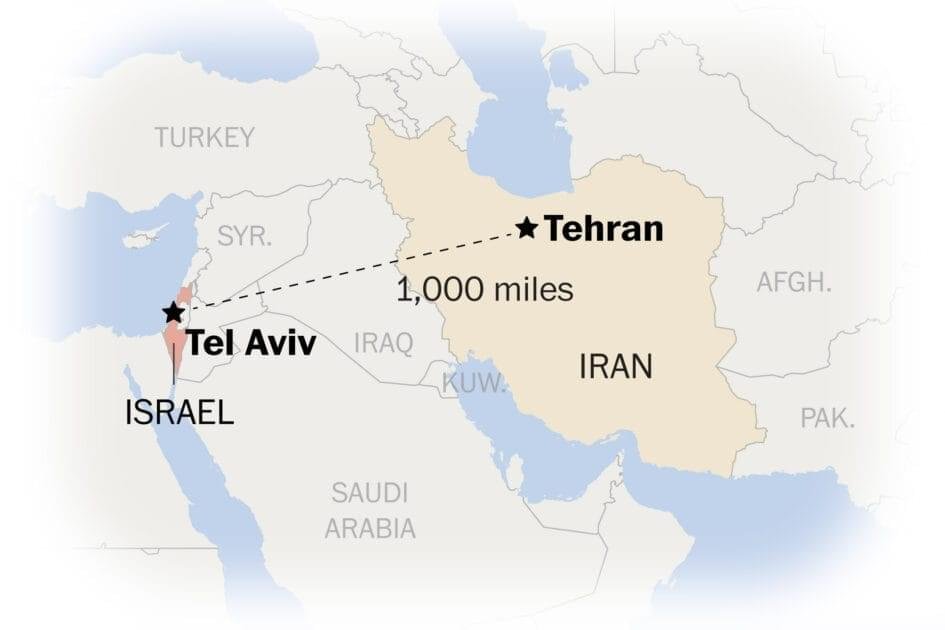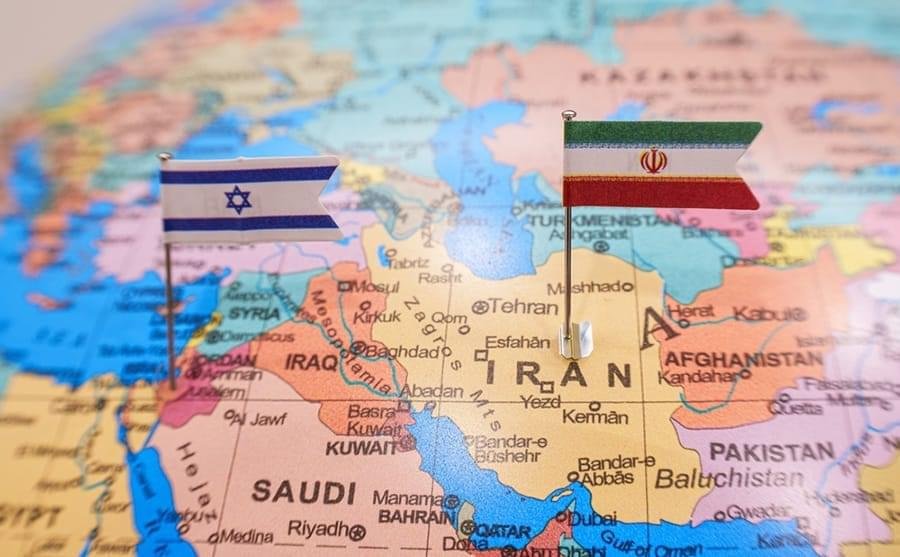Israel–Iran War : The Middle East is the center of global politics, and tensions between Israel-Iran have shaped the region for decades. What started as a long-standing rivalry rooted in religion, ideology, and national interests has now evolved into direct military confrontations that affect not only the Middle East but the world at large.
In June 2025, this tension escalated sharply, with direct airstrikes, proxy clashes, and global powers weighing in. This article provides a comprehensive understanding of the Israel-Iran conflict – from its roots and historical context to its present-day status and global implications.

1. The Middle East: A Geo-Political and Religious Power-Keg
The Middle East is a vital area for global politics, global energy, and religious heritage. It is the birthplace of three major religions – Judaism, Islam, and Christianity – making it a highly sensitive and contested area.
Its vast oil and gas reserves give it enormous economic and geopolitical significance, making it a focus area for global powers like the United States, Russia, and China.
2. Israel-Iran: Historical Context
The Creation of Israel (1948)
Israel emerged as an independent state in 1948, a pivotal moment after World War II and the Holocaust. Its establishment sparked immediate conflict with Arab nations, leading to the Arab–Israeli wars and long-standing tensions across the Middle East.
The Iranian Revolution (1979)
In 1979, the Shah of Iran was overthrown, and an Islamic Republic was established. This new regime refused to recognize Israel and advocated openly for its dissolution, making Israel and Iran sworn enemies.
3. Main Causes of the Israel–Iran Conflict
Religious and Cultural Divisions
The clash between Israel (a Jewish state) and Iran (a Shia Muslim powerhouse) is deeply rooted in religious and cultural tensions. These tensions have shaped alliances and enmities across the Middle East.
The Nuclear Issue
Iran’s nuclear program has long been Israel’s biggest security concern. Israel considers a nuclear-capable Iran an existential threat and has conducted covert and overt strikes to disrupt its nuclear ambitions.
The Battle for Regional Dominance
Iran aims to dominate the Middle East through proxy groups like Hezbollah in Lebanon, Hamas in Gaza, and Shia militias across Iraq and Syria. Israel perceives this as a direct threat to its security and sovereignty.
Proxy Wars
Iran supports anti-Israel groups across the Middle East, allowing the conflict to spread beyond its borders. Israel has responded with precision airstrikes and intelligence-led operations across Syria, Lebanon, and Iraq.
The Role of Global Powers
The United States, Russia, and China have significant interests in the Middle East. Their involvement — through alliances, arms sales, and strategic interventions – adds another layer of complexity to the Israel–Iran conflict.
Key Historical Milestones of the Conflict
| Year | Event |
|---|---|
| 1948 | Creation of Israel sparks the first Arab–Israeli war |
| 1979 | The Islamic Revolution in Iran marks the rise of an anti-Israel regime |
| 2015 | The JCPOA (Iran Nuclear Deal) aims to limit Iran’s nuclear program |
| 2018 | The US exits the JCPOA, intensifies sanctions on Iran |
| 2023 | Israel intensifies airstrikes in Syria targeting Iran-backed forces |
| 2025 | The Israel–Iran conflict becomes direct with airstrikes and missile attacks |

5. Current Status of the Conflict (June 2025)
Israel’s Initial Offensive
- June 13, 2025: Israel launched airstrikes on Iran and Syria, hitting nuclear and military sites.
(Source: Times of India, June 22, 2025.)
Iran’s Response
- Iran retaliated with its advanced Kheibar Shekan ballistic missiles that bypassed Israel’s Iron Dome defenses.
(Source: Economic Times, June 2025.)
The Role of the United States
- The US conducted Operation Midnight Hammer, deploying B-2 stealth bombers that launched precision strikes against Iran’s nuclear facilities.
(Source: Times of India, June 22, 2025.)
Iran’s Retaliation
- Iran responded with drone and missile attacks on Israel’s Ben Gurion Airport and other key installations.
Humanitarian Impact
- Civilians across Israel, Iran, and Syria have suffered significant losses due to airstrikes and missile attacks.
6. The Global Impact of the Israel–Iran Conflict
Humanitarian and Social Impact
- Civilian casualties and mass displacements across the Middle East.
- Growing humanitarian crisis and rising tension across borders.
Economic Impact
- Disruption of global oil and gas supplies leading to rising fuel prices.
- Potential for long-term global economic slowdown if tensions intensify.
Political Impact
- Redrawing alliances across the Middle East, Europe, and Asia.
- Proxy warfare intensification across Iraq, Syria, Lebanon, and Gaza.
Environmental Impact
- Damage to ecosystems due to missile attacks, airstrikes, and weapons usage.

7. Israel–Iran Conflict: Key Military Technologies and Weapons
Israel
- Iron Dome & Arrow air defense systems.
- F-35 stealth fighters.
- B-2 bombers (deployed in collaboration with the United States).
Iran
- Kheibar Shekan long-range precision ballistic missiles.
- Shahed drones used for precision strikes across borders.
8. The Role of Global Powers
🇺🇸 United States
- Strong support for Israel, including direct military intervention.
- Imposition of economic and military sanctions on Iran.
🇷🇺 Russia
- Strong political and military support for Iran.
- Advocating negotiations and peace through international platforms.
🇨🇳 China
- Calling for restraint and dialogue between Israel and Iran.
- Maintaining economic and energy interests across the Middle East.
🇹🇷 Turkey
- Advocating mediation and dialogue between the two nations.
- Balancing its interests with both Israel and Iran.
🇸🇦 Saudi Arabia and Gulf States
- Maintaining neutrality due to economic and security interests.
- Advocating for regional peace and stability.
9. India’s Role in the Israel–Iran Conflict
India occupies a unique and balanced position in this crisis:
- Strong Bilateral Relations with Both Countries:
- With Israel: A deep strategic partnership focusing on defense, agriculture, and security cooperation.
- With Iran: Long-standing cultural, economic, and energy connections.
- Call for Diplomacy and De-escalation:
- India has urged both nations to halt hostilities and return to dialogue.
- Prime Minister Modi and the Ministry of External Affairs have advocated for peace at global platforms.
(Source: Times of India, June 2025.)
- Humanitarian Assistance:
- India has launched efforts akin to “Operation Ajay” and “Operation Ganges” to safely evacuate its citizens from war zones.
- Support for Global Peace Frameworks:
- India has promoted peace through global institutions like the United Nations and G20.
- It has actively engaged with the OIC (Organization of Islamic Cooperation) and the Arab League to reduce tensions.
10. Long–Term Implications of the Israel–Iran Conflict
Political Impact
- Increased tensions between the United States and Russia.
- New alliances in the Middle East with shifting dynamics.
Economic Impact
- Oil and gas prices could rise sharply, impacting global trade.
- The threat of global recession due to rising energy costs and supply chain disruption.
Environmental and Human Rights Impact
- Damage to infrastructure and loss of civilian lives.
- Risk of long–term environmental degradation.
11. The Road Ahead: Possible Solutions and Peace Prospects
- Diplomatic Intervention: Renewed efforts by the United Nations, OIC, Arab League, and other global institutions.
- Trust–Building Measures: Initiation of direct dialogue between Israel and Iran to reduce tensions.
- Global Commitment: The role of international actors like the US, Russia, China, and India in ensuring a viable peace process.
The Israel–Iran conflict is more than a war between two nations – it is a global crisis with far–reaching consequences. The world must recognize the urgent need for peace and stability in the Middle East, making diplomacy, dialogue, and mutual trust the cornerstone of international efforts.
If the global community fails to intervene, this conflict may evolve into an even more devastating and long–term crisis, reshaping international politics and the global economy for generations to come.
Sources and References
- Reuters: Muslim Countries Set Up Contact Group for Israel–Iran De–escalation, June 22, 2025
- Times of India: US Strikes Iran, Israel–Iran Conflict Latest Developments, June 22, 2025
- Economic Times: The Ghost Missile — Kheibar Shekan vs Israel’s Defences, June 2025
- Wall Street Journal: Ceasefire Resolution in the Middle East, June 2025




